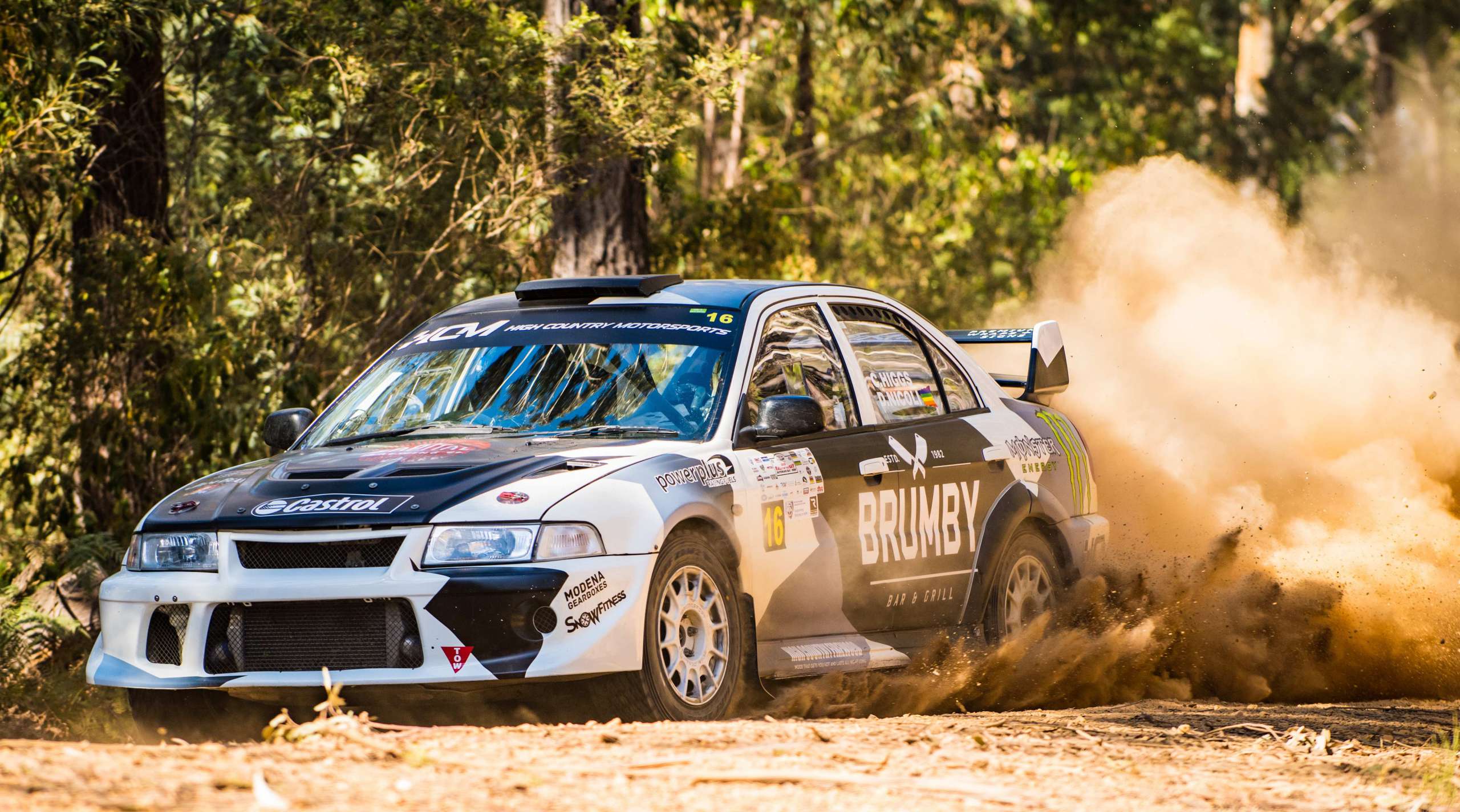Chris Higgs and co-driver Daymon Nicoli had been competing at the highest level in Australian Rally before disaster struck during a local club round in Narooma 12 months ago.
As the pair approached a corner at speed, one of the mounting brackets of their Subaru WRX STi GC8 steering rack broke causing the wheel to lock up.
As a result of the lock up, their car uncontrollably speared into a tree at more than 120km/h which spectators, including CAMS Australian Rally Championship (ARC) competitor Dale Moscatt, described as one of the worst they had seen.
Fortunately for both Higgs and Nicoli, they only suffered minor injuries with Higgs sustaining a broken foot.
In reviewing the incident, Higgs believed it was the safety features he was wearing that saved him on the day.
“We were definitely lucky to come out alive,” Higgs said.
“It was a very significant crash and at the end of the day, it was the safety gear that saved us.
“We had a roll cage, FIA approved belts, wing seats and Frontal Head Restraints (FHR) which were all big things.
“Without a doubt in my mind, if were not wearing neck support (in the form of FHR), we would have probably both broken our necks because it was an instant stop.
“Looking back at the footage, our bodies moved a lot on impact, so if we did not have FHRs on, we would not be here now and that is a guarantee.”
Frontal Head Restraints (FHR) are now mandatory in state and national level rallies and CAMS has previously confirmed the safety equipment will be compulsory in Multi Club level events from 1 January 2019 and Club level events from 1 January 2020.
While Higgs was an advocate for safety gear before the accident, he has since become a bigger believer that all levels should be required to wear them after experiencing their benefits first hand.
“I ran two years of ARC and never had a crash but then doing a club round is when I had my biggest accident,” Higgs added.
“At the end of the day, for the small cost of around $1000, is it worth saying ‘I can’t afford that’? Is your life not worth that much?
“For us it’s simple. We were not even at fault during our accident. We had no control because it was a mechanical failure.”
Not long after the accident that could have ended in tragedy, Higgs was back behind the wheel of friend Simon Evans’ SXS (side by side) turbo regaining confidence.
When a Mitsubishi Evo 6 became available, Higgs and Nicoli jumped at the opportunity to start competing again while they work on a new Volkswagen Polo AP4 for the 2019 rally season.
Fittingly, the pair’s first competitive event was the same one where they had an accident 12 months previous, in an attempt to conquer the rally they had completed twice before and get back to racing again.
“Personally I had some very good support from the Evans family in Simon and Eli which helped me recover a little bit,” Higgs said.
“It felt really good to get back into competition. Our first round was a big mental thing which is I wanted to do Narooma.
“There was never too much nerves because we had done the rally twice before and it was mechanical is why we have been able to move on pretty quickly.
“We finished Narooma and then Batemans Bay in the top five which is pretty good for what we wanted to do.”
With the accident well and truly out of their minds, Higgs and Nicoli now turn to the BOTT Adelaide Hills Rally next month for their first CAMS Australian Rally Championship event since last year.




